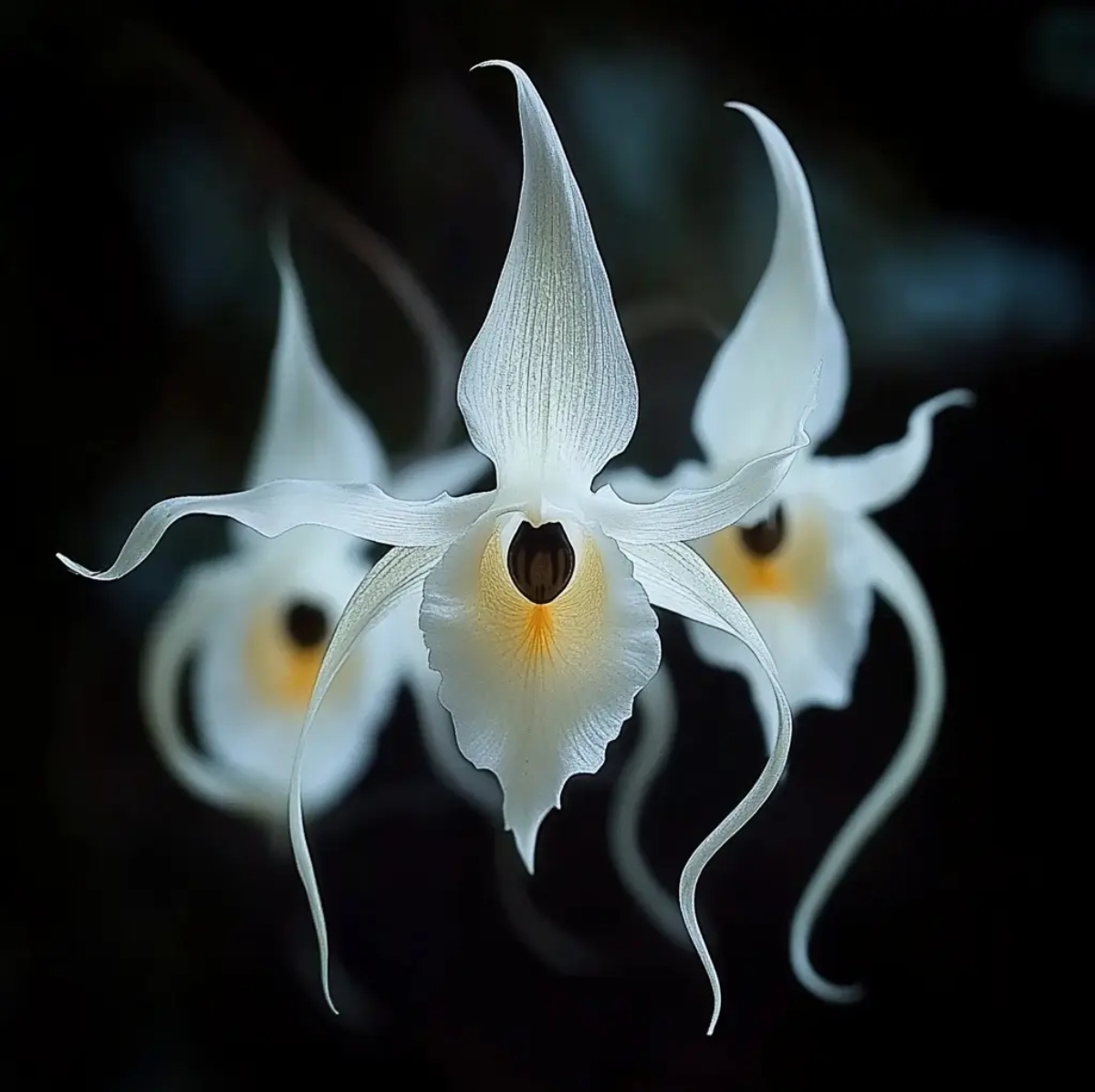A Rare Beauty in the Wild
The Ghost Orchid’s most striking feature is its flower, which appears to hover in the air due to the plant’s leafless nature. Unlike most orchids, Dendrophylax lindenii has no leaves; instead, it consists mainly of a network of roots that cling to the bark of trees, particularly cypress and pond apple trees, which it uses for support. The flowers are a pale greenish-white with long, flowing petals and sepals, resembling a ghost in flight—an image that has inspired its haunting name.
This orchid blooms only for a few weeks each year, typically from June to August, and each bloom lasts for about a week. The delicate, fragrant flowers release their scent at night, attracting their main pollinator, the giant sphinx moth (Cocytius antaeus). The pollination of the Ghost Orchid is an intricate process, as the moth must insert its proboscis into the orchid’s long spur to reach the nectar, ensuring the transfer of pollen.
A Symbiotic Survivor
The Ghost Orchid is an epiphyte, meaning it derives its moisture and nutrients from the air, rain, and the debris around it. Its roots are covered in a special layer of cells called velamen, which helps absorb water and nutrients. This unique adaptation allows the plant to thrive high in the canopies of the humid, shaded swamps where it is found.
However, its reliance on very specific environmental conditions makes Dendrophylax lindenii highly vulnerable. The destruction of its swamp habitat due to human activity and climate change poses a significant threat to its survival in the wild.
The Elusive Cultivation
Despite its allure, the Ghost Orchid remains notoriously difficult to cultivate outside its natural environment. Orchid collectors and horticulturists often attempt to grow it, but replicating the high humidity, specific temperature range, and root attachment conditions required by the plant is incredibly challenging. Moreover, its leafless form makes it difficult to gauge its health, adding another layer of complexity to its cultivation.
Due to these difficulties, the Ghost Orchid is seldom found in commercial orchid collections or greenhouses. For most enthusiasts, the plant is best appreciated in the wild, where it can be observed in its natural, swampy habitat.
Conservation Efforts and Challenges
The Ghost Orchid is classified as endangered, primarily due to habitat loss and poaching. Its fragile ecosystem in the Everglades and other swamps is under constant threat from land development, invasive species, and changes in water levels. Furthermore, the plant is a target for illegal orchid collectors, which has contributed to its declining numbers.
Conservationists are working to protect the remaining Ghost Orchid populations by preserving their habitats and raising awareness about the plant’s importance in the ecosystem. Some efforts also focus on trying to cultivate the orchid in a controlled environment, though success remains limited.
Conclusion: A Symbol of Nature’s Mystery
The Ghost Orchid is more than just a plant—it’s a symbol of nature’s mystery and fragility. Its elusive beauty and ghostly appearance have captivated imaginations for generations, making it one of the most sought-after and studied orchids in the world. Yet, its very existence hangs by a thread, reminding us of the delicate balance that exists in our natural world and the importance of preserving these rare species.
Whether you’re an orchid enthusiast or simply a lover of the natural world, Dendrophylax lindenii stands as a testament to the wonders of biodiversity and the intricate relationships that bind plants, animals, and their environments together. To witness a Ghost Orchid in bloom is to experience a rare and unforgettable glimpse of nature’s artistry.
